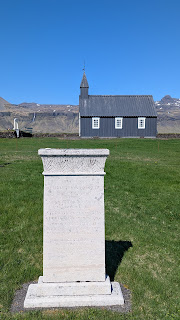"Travelling gives you a home in a thousand strange places, then leaves you a stranger in your own land." - Ibn Batuta
A four hour tour in a Grab Taxi, with an affable driver, took me around some of the must see sights of the northern and southern parts of the city.1. The Likas Bay has a 7 km promenade with jogging and cycling track and stretches from the city port to the iconic Tun Mustapha Tower. The international dragon boat race is held every year in the bay. The necklace like promenade is studded by several prominent buildings and landmarks.
2. The Sabah International Convention Centre or SICC is the largest convention, exhibition, and entertainment facility in East Malaysia. Spanning five levels, with over 153,000 sqm of function space, SICC's well-designed floor plan allows for interference free multiple events.3. Almost diagonally opposite the convention centre is studded the state motto: Sabah Maju Jaya, which translates to Sabah prospers. A couple of cab drivers sneered while translating the motto! This indicated that reality was at variance according to them.4. The Tun Mustapha Tower is a 30-storey, 122-metre-tall glass tower built in 1976. The building, formerly named Yayasan Sabah Tower, housed a state-sponsored foundation to promote education and economic development in the state. In 2001, the tower was renamed to honour Tun Datu Mustapha, a former Sabah chief minister and state governor. There is a revolving floor on the 18th floor, which slowly spins to give a complete view of the Likas Bay. It makes one 360-degree rotation per hour.5. The Kota Kinabalu City Mosque is popularly known as the Floating Mosque thanks to the manmade lagoon surrounding it. As I could make out there are three levels of entry regulations to the mosque. Non- Muslims are not permitted into the mosque. One can enter the second level if you wear an abaya. For those who only buy an entry ticket of RM 5, one can only walk around the walls of the lagoon and marvel at the white mosque with a striking blue dome.6. Kinabalu Tower, also known as Sabah State Administrative Centre, is a 33-storey, 182-meter-tall, government office complex building, which houses the office of the Chief Minister of the state and other cabinet ministers. This is the second tallest building in Borneo, with the Jessleton twin towers being the tallest.7. The Pink Mosque is within the Universiti Malaysia Sabah (UMS) campus, the sprawling university campus. To enter the campus one must take a entry ticket costing RM 10 per person. Its beautiful architecture in pink is stunning, to say the least. Again, one has to rent an abaya to gain entrance to the mosque.8. The Pinakol Staircase, or De Pinakol Steps, is a unique feature of the UMS, characterized by 138 steps adorned with decorations. It's a known landmark on the campus, attracting visitors with its distinctive design.9. Standing at a height of 9 meters, the clock tower is situated at the heart of the UMS roundabout. The symbolic significance of the UMS clock tower is that it represents the value of time for intellectuals and scholars.10. The Signal Hill Observatory Platform is a high-roofed platform, shaped in the form of a UFO, located at the edge of Signal Hill overlooking Kota Kinabalu and the South China Sea. The observatory is said to afford visitors panoramic views of the Likas Bay and the Tanjung Aru areas; it is considered to be one of the most scenic viewpoints of Kota Kinabalu. I was disappointed when I reached there, hoping to catch the sights described in travel sites. The entrance to the viewpoint was closed and seemed so for some time. Nearby were also a few places where minor landslides had occurred due to the heavy rains during the past week.11. Sutera Harbor Resort overlooks the tranquil South China Sea with views of tropical islands and the majestic Mount Kinabalu. It is a sprawling 384-acre grand expanse of spectacular array of resort facilities, from a choice of luxurious five-star hotels, an award-winning 27-hole Graham Marsh-designed golf course, a 110-berth marina and exhilarating recreational services. The resort ambiance of The Magellan Sutera Resort, offering a combined total of 956 guestrooms and suites, is to be seen to be believed.12. The Tanjung Aru beach derives its name from casuarina trees,or Aru trees, that fringe the fine sandy beach. The beach is to Sabah what Bondi is to Sydney or Copacabana is to Rio. It is popular for kite flying, surfing, picnics and feasting on local food.13. Petagas war memorial is dedicated to the Second World War victims in Sabah, particularly the 324 resistance movement members, who were executed on 21 January 1944 at the site by the Japanese occupying forces of North Borneo for their involvement in the Jesselton Revolt.14. The early catholic community of Kota Kinabalu comprised of immigrant workers and some Europeans. The Parish was founded in 1911 and the first church was also established then. The current Sacred Heart Church is the fourth built on the same hallowed grounds. It was consecrated in 1981.15. The most interesting interaction in the island happened with taxi drivers, Yap, Michael, Irene and Firoze. None of them seemed impressed by those in power. All of them were friendly and open to conversation. Fortunately, they were not directly impacted by the fury of the weather over the past two weeks, even though more than a dozen people had lost their lives and properties were destroyed by landslides and flooding. Irene asked me why I was 'white', while she found most Indians 'black'! I told her that her observations steamed from a combination of lack of exposure to Indians and colour blindness.



































































